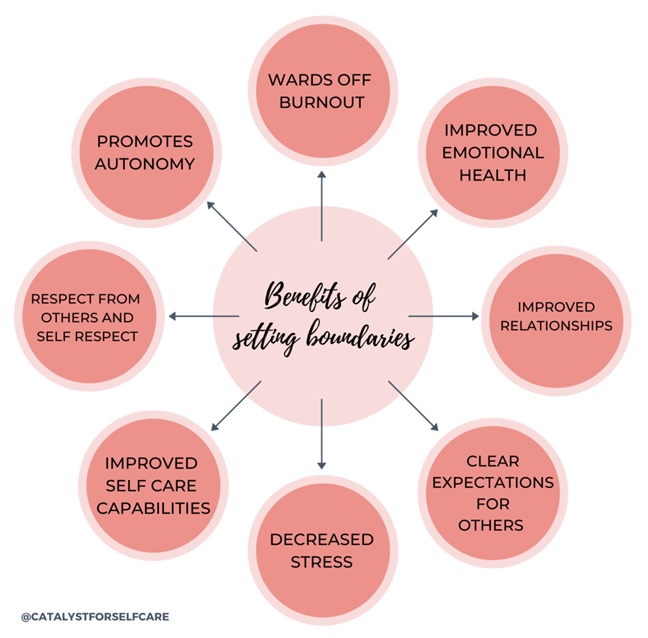Empower Your Learners: How Counsellor Teachers Can Help Children To Set Healthy Boundaries?
27th February 2024
Teachers who have acquired counselling methods and knowledge know the importance of setting personal boundaries. You also become capable of noticing when any student is going over the edge of their set boundaries and out of their comfort zones.
A teacher's job as a counsellor is to teach the benefits of setting boundaries.

Source: wellnesscenter.uic.edu
They also must teach their students to maintain their authenticity rather than to please their peers and group. It’s good to step outside of your comfort zone sometimes to improve yourself but it’s not worth it to that extreme point where any individual feels out of place which affects their mental and overall well-being.
In this blog post, we will be exploring some of the effective strategies with which you can help your students to set boundaries for their own well-being.
Before moving to the topic, can we ask you a question? Do you follow us on Social Media? We regularly share upgraded educational content, tips, feedback, and more. Check us out by clicking the profiles here - Facebook / Twitter / LinkedIn / Pinterest / Instagram / YouTube
So, without any further delay, let’s get started.
1. Don’t Feel Shy, Express Yourself
We are living in a progressive 21st century where we expect to support and celebrate each other’s uniqueness and different personalities. However, the reality is quite the opposite, this society judges everyone.
This society judges especially those individuals who are sentimental, sensitive, or who like to express their thoughts and feelings openly. If you have an introvert personality then living in a society where being extrovert is celebrated can be an uncomfortable experience.
Furthermore, as a responsible teacher, it’s your responsibility to teach your students that it’s completely okay to let other people know what makes them comfortable, uncomfortable and also express their feelings and thoughts without any hesitation.
Additionally, you must also teach them not to compromise their peace of mind at any cost just to please society and their peers.
2. Learn to Say “No”
In our society, every individual feels obligated to say “Yes”, even if they do not feel like saying it.
It’s okay and normal to say “No”.
A teacher's job as a counsellor is to teach their students to set boundaries and once they have set it then they should keep that in mind and not break that boundary to please society and their peers.
However, you also need to ensure that students don’t need to be harsh when they are saying “no” to anyone. Teach them to say “no” politely yet firmly without hurting anyone’s feelings. You can encourage your students to use sentences like, I would love to socialize with you but-
- I am busy right now.
- Right now, it’s not possible, but maybe some time later.
- Instead…
By teaching your students to express their feelings and thoughts like that politely yet firmly can help students to maintain their boundaries.
3. No Need to Feel Guilty
A teacher's job as a counsellor also needs to teach their students that there’s no need to feel guilty while they are saying “No”. You need to make your students realize that it’s completely normal to stick with their created boundaries and not overdo any action to please their peers or society.
Additionally, teach your whole classroom to understand each other’s boundaries, respect them, and show compassion toward each other.
Teaching Your Students to Maintain Boundaries is Essential
In today’s society, every individual feels the need to please their peers to get accepted and become a part of the society. However, those teachers who have pursued courses like Post Graduate Diploma in Counselling for Teachers, know the importance of setting boundaries and they also know how to teach their students.
However, in the above-mentioned blog post, we have shared 3 practical exercises counsellors use to teach saying no which you can implement in your classroom to help your students set boundaries and say “No” without feeling guilty about it.
Written By : Abhishek